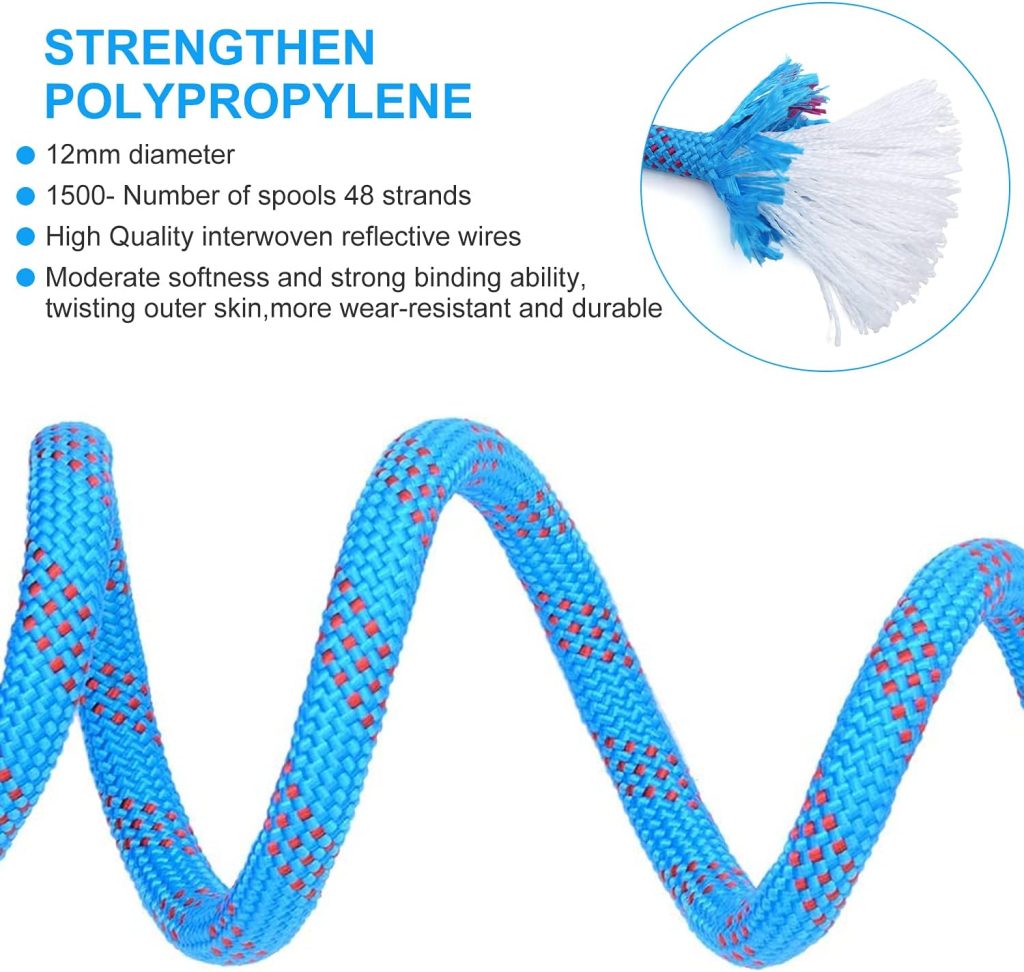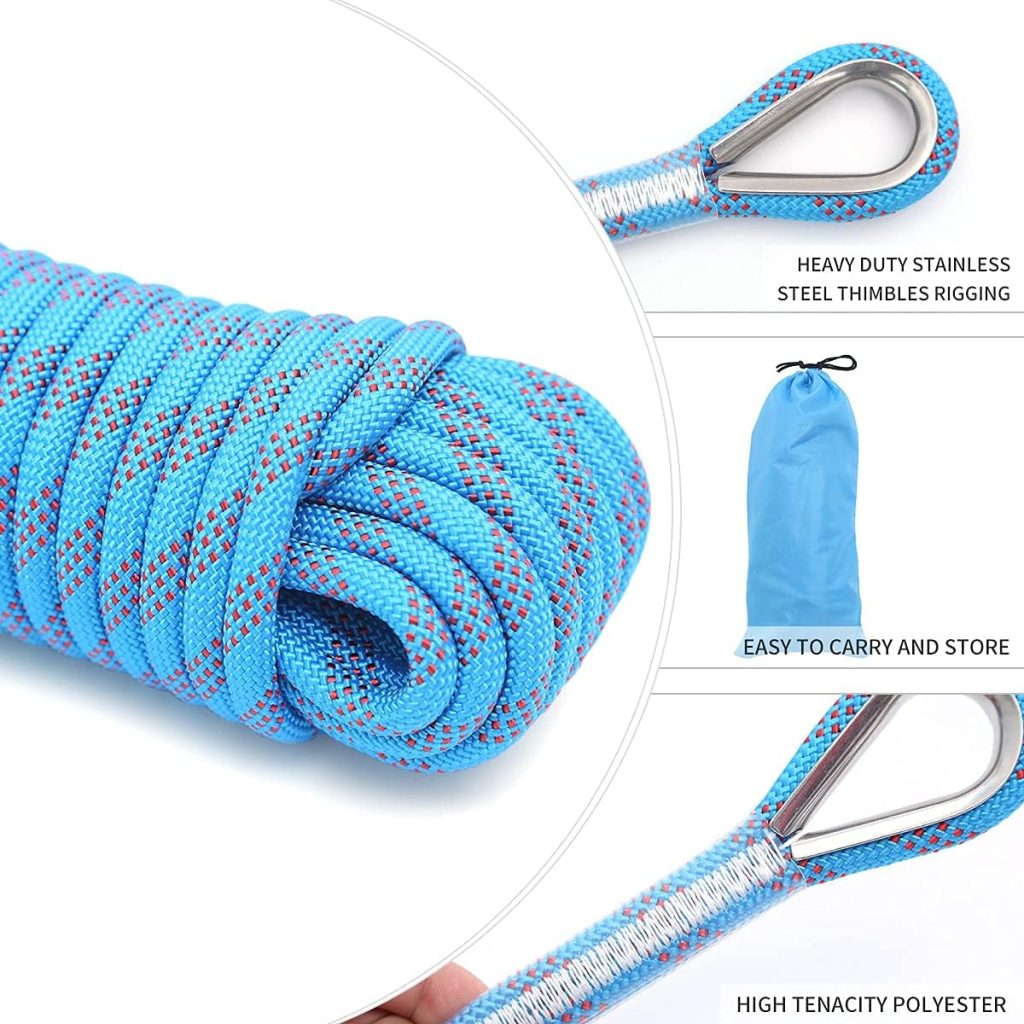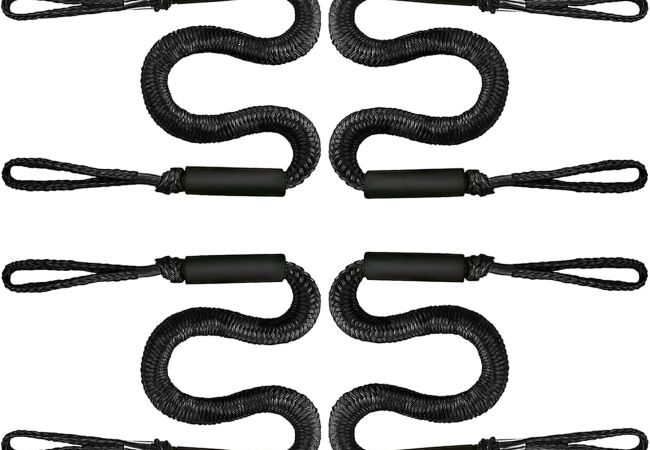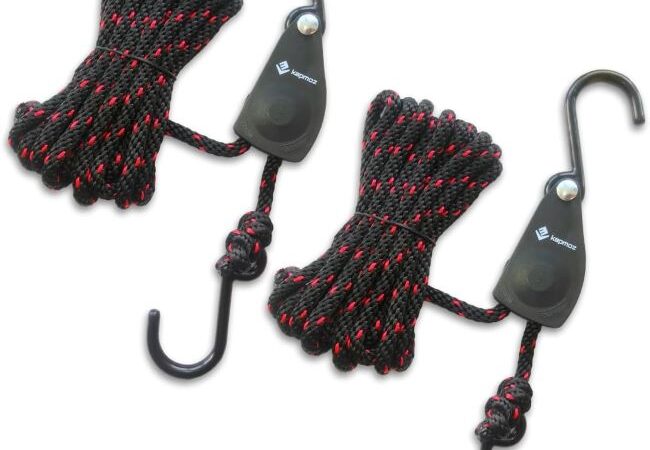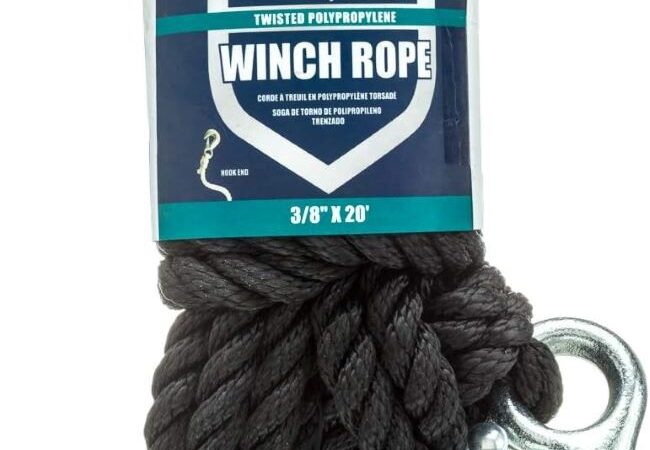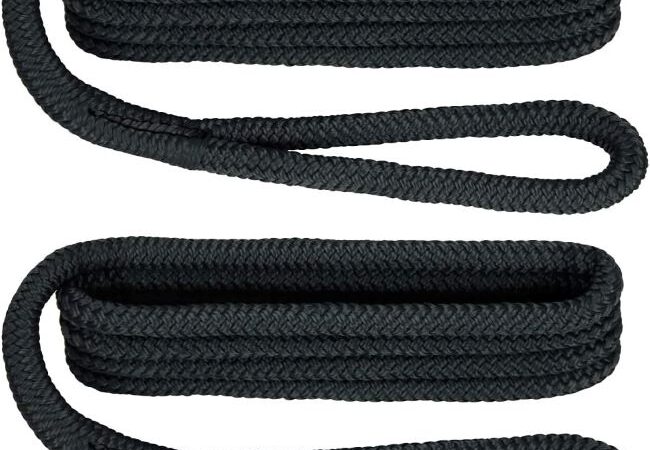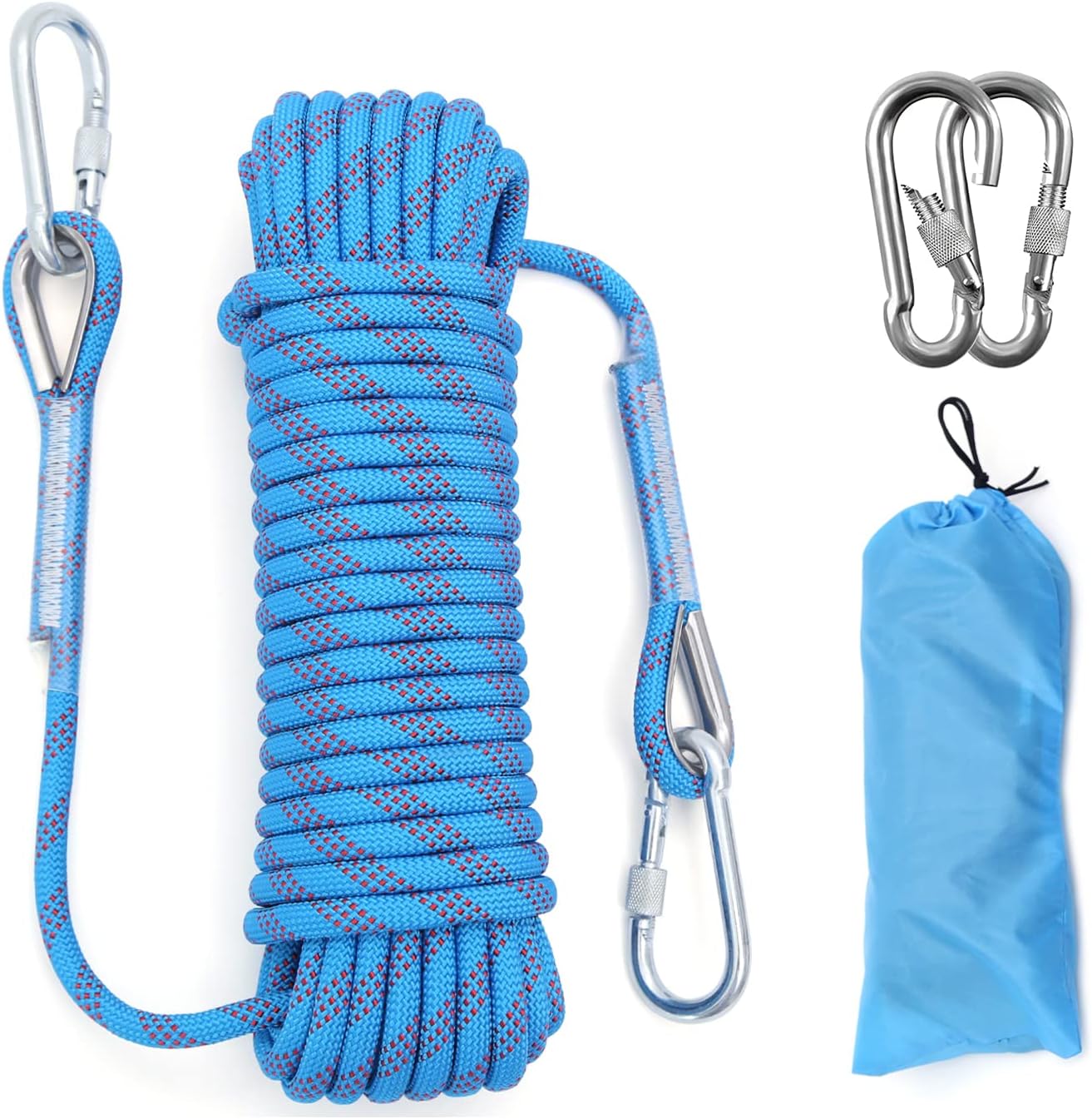
XINSHUNCAN 10mm/12mm Outdoor Climbing & Rescue Rope Review: Your Ultimate Safety Companion for Vertical Adventures
Every second counts when you’re suspended between earth and sky, trusting nothing but the rope beneath your harness. Whether you’re scaling granite walls in Yosemite or preparing for emergency rescue operations, your climbing rope isn’t just equipment—it’s your lifeline. The XINSHUNCAN 10mm/12mm Outdoor Climbing & Rescue Rope promises to be that crucial safety partner, but does it deliver on its bold claims?
Contents at a Glance
ToggleWhat Makes the XINSHUNCAN Static Rope Stand Out?
The XINSHUNCAN climbing rope represents a significant advancement in static rope technology, designed specifically for outdoor enthusiasts who demand reliability without compromise. This professional-grade rope features a static nylon construction that maintains minimal stretch under load, making it ideal for rescue operations, rappelling, and technical climbing applications.
Key Specifications and Features
Diameter Options: Available in both 10mm and 12mm configurations, allowing climbers to choose based on their specific needs and equipment compatibility.
Material Construction: High-strength static nylon core with durable outer sheath, engineered to withstand extreme weather conditions and repeated use.
Steel Hook Integration: Heavy-duty steel hooks provide secure anchor points and eliminate the need for additional carabiners in many situations.
Load Capacity: Tested to support significant weight loads, meeting international safety standards for climbing and rescue equipment.
Length Variations: Multiple length options accommodate different climbing scenarios, from short rappels to extended rescue operations.
Understanding Static vs Dynamic Ropes
Static ropes like the XINSHUNCAN model differ fundamentally from dynamic climbing ropes. While dynamic ropes stretch to absorb the energy of falling climbers, static ropes maintain their length under load. This characteristic makes them perfect for rescue work, caving, rope access, and situations where rope stretch would complicate operations.
The static nature of this rope provides several advantages for specific applications. Rescue teams benefit from predictable rope behavior during victim extraction, while cavers appreciate the consistent performance when ascending or descending vertical sections. Tree surgeons and arborists find static ropes essential for precise positioning and controlled movement through canopies.
Versatile Applications Across Multiple Disciplines
Rock Climbing and Mountaineering
For traditional rock climbing, the XINSHUNCAN rope excels in aid climbing scenarios where climbers need to ascend using mechanical assistance. The minimal stretch prevents bouncing and allows for efficient upward progress. Multi-pitch routes benefit from the rope’s consistency, particularly during long rappels where rope stretch could cause navigation challenges.
Mountain rescue teams often choose static ropes for technical rescue operations in alpine environments. The predictable behavior helps rescuers calculate distances accurately and maintain control during complex extraction procedures.
Tree Climbing and Arboriculture
Professional arborists require equipment that performs reliably in challenging conditions. Tree climbing involves unique stresses, including contact with rough bark, exposure to weather, and the need for precise positioning. The XINSHUNCAN rope’s durable construction withstands these demands while providing the control necessary for safe tree work.
Ice Climbing Applications
Ice climbing presents extreme conditions that test equipment limits. The rope’s nylon construction maintains flexibility even in sub-zero temperatures, while the steel hooks provide reliable anchor points in ice and mixed terrain. The static properties help ice climbers maintain precise positioning when placing protection or navigating technical sections.
Emergency and Fire Escape Scenarios
Emergency preparedness often requires specialized equipment that performs when lives depend on it. The XINSHUNCAN rope serves as an excellent emergency escape rope for buildings, industrial facilities, and remote locations. The steel hooks allow for quick deployment and secure anchoring to available attachment points.
Fire departments and emergency response teams appreciate equipment that combines reliability with ease of use. The rope’s construction materials resist heat better than some alternatives, providing additional safety margins during emergency operations.
Pros and Cons Analysis
Advantages
Superior Durability: The high-quality nylon construction ensures long-term performance even under demanding conditions. Users report excellent resistance to abrasion and environmental degradation.
Versatile Design: Multiple diameter options and steel hook integration make this rope suitable for various applications without requiring extensive additional equipment.
Reliable Performance: Static construction provides predictable behavior, crucial for rescue operations and technical climbing scenarios.
Cost-Effective Solution: Competitive pricing compared to other professional-grade static ropes makes it accessible to serious enthusiasts and professionals.
Easy Handling: The rope maintains good handling characteristics even in cold conditions, important for year-round use.
Limitations
Limited Dynamic Applications: Not suitable for lead climbing or situations requiring energy absorption from falls.
Weight Considerations: Heavier than dynamic ropes of similar diameter, which may impact long approaches or weight-sensitive applications.
Learning Curve: Requires proper training and understanding of static rope techniques, particularly for climbers transitioning from dynamic ropes.
Steel Hook Maintenance: Metal components require regular inspection and care to prevent corrosion and ensure continued performance.
Safety Considerations and Best Practices
Safety remains paramount when using any climbing equipment. The XINSHUNCAN rope requires proper inspection before each use, checking for cuts, abrasions, or damaged fibers. The steel hooks need particular attention, examining for cracks, corrosion, or wear that could compromise strength.
Proper storage extends rope life significantly. Keep the rope clean and dry, avoiding exposure to chemicals or extreme temperatures when not in use. Regular cleaning with mild soap and water helps maintain the outer sheath and reveals any hidden damage.
Understanding load limits and proper knot selection ensures safe operation. Static ropes behave differently than dynamic ropes in knot systems, requiring specific techniques for optimal performance.
Maintenance and Longevity
The XINSHUNCAN rope’s longevity depends heavily on proper care and maintenance. Regular inspection schedules help identify wear patterns and potential problems before they become safety hazards. Professional inspection services can provide detailed analysis of rope condition for critical applications.
Cleaning protocols should follow manufacturer guidelines, using appropriate detergents that won’t damage the nylon fibers. Proper drying prevents mold and mildew growth that could weaken the rope structure.
Steel hook maintenance involves regular lubrication and corrosion prevention. Stainless steel components resist corrosion better but still require attention in marine or high-humidity environments.
Frequently Asked Questions
Q: Can I use this rope for lead climbing? A: No, this is a static rope designed for rescue, rappelling, and aid climbing. Lead climbing requires dynamic ropes that can absorb fall energy safely.
Q: What’s the difference between 10mm and 12mm options? A: The 12mm diameter offers higher strength ratings and better durability, while 10mm provides lighter weight and easier handling for less demanding applications.
Q: How do I properly care for the steel hooks? A: Regularly inspect for damage, keep them clean and dry, and apply light lubrication to moving parts. Replace immediately if you notice any cracks or significant wear.
Q: Is this rope suitable for caving? A: Yes, static ropes are preferred for caving applications where minimal stretch is important for efficient movement and rope management.
Q: What’s the maximum safe working load? A: Always consult the manufacturer’s specifications and follow appropriate safety margins. Working loads should never exceed manufacturer recommendations.
Q: Can I use this rope in saltwater environments? A: While the rope can handle occasional saltwater exposure, rinse thoroughly with fresh water afterward and inspect regularly for any signs of deterioration.
Q: How long should I expect this rope to last? A: Rope lifespan depends on usage frequency, conditions, and care. Heavy professional use may require replacement annually, while occasional recreational use could extend life to several years with proper maintenance.
Making the Right Choice for Your Adventures
The XINSHUNCAN 10mm/12mm Outdoor Climbing & Rescue Rope represents solid value for climbers, rescue professionals, and outdoor enthusiasts who need reliable static rope performance. Its versatile design accommodates multiple applications while maintaining the safety standards crucial for life-support equipment.
Consider your specific needs when choosing between diameter options. Professional rescue teams or frequent users might prefer the 12mm version for its enhanced durability, while occasional users or weight-conscious applications might favor the 10mm option.
The integrated steel hooks provide convenience and reliability, though they add weight and require additional maintenance attention. For users who frequently need secure anchor points, this feature offers significant advantages over traditional rope-only systems.
Ready to Elevate Your Climbing Safety?
Don’t leave your safety to chance on your next vertical adventure. The XINSHUNCAN climbing rope offers the reliability and performance you need for confident climbing, whether you’re tackling technical rescue operations or enjoying weekend rock climbing sessions.
Take action today: Research current availability and pricing from authorized retailers, compare specifications with your existing equipment, and consider how this rope fits into your climbing system. Remember to invest in proper training if you’re new to static rope techniques – your safety depends on both quality equipment and proper knowledge.
Share your climbing experiences and rope recommendations with fellow adventurers, and always prioritize safety over convenience. Your next great adventure awaits, and having the right equipment makes all the difference between a successful climb and a dangerous situation.
Gear up smart, climb safe, and never stop exploring the vertical world around you.

